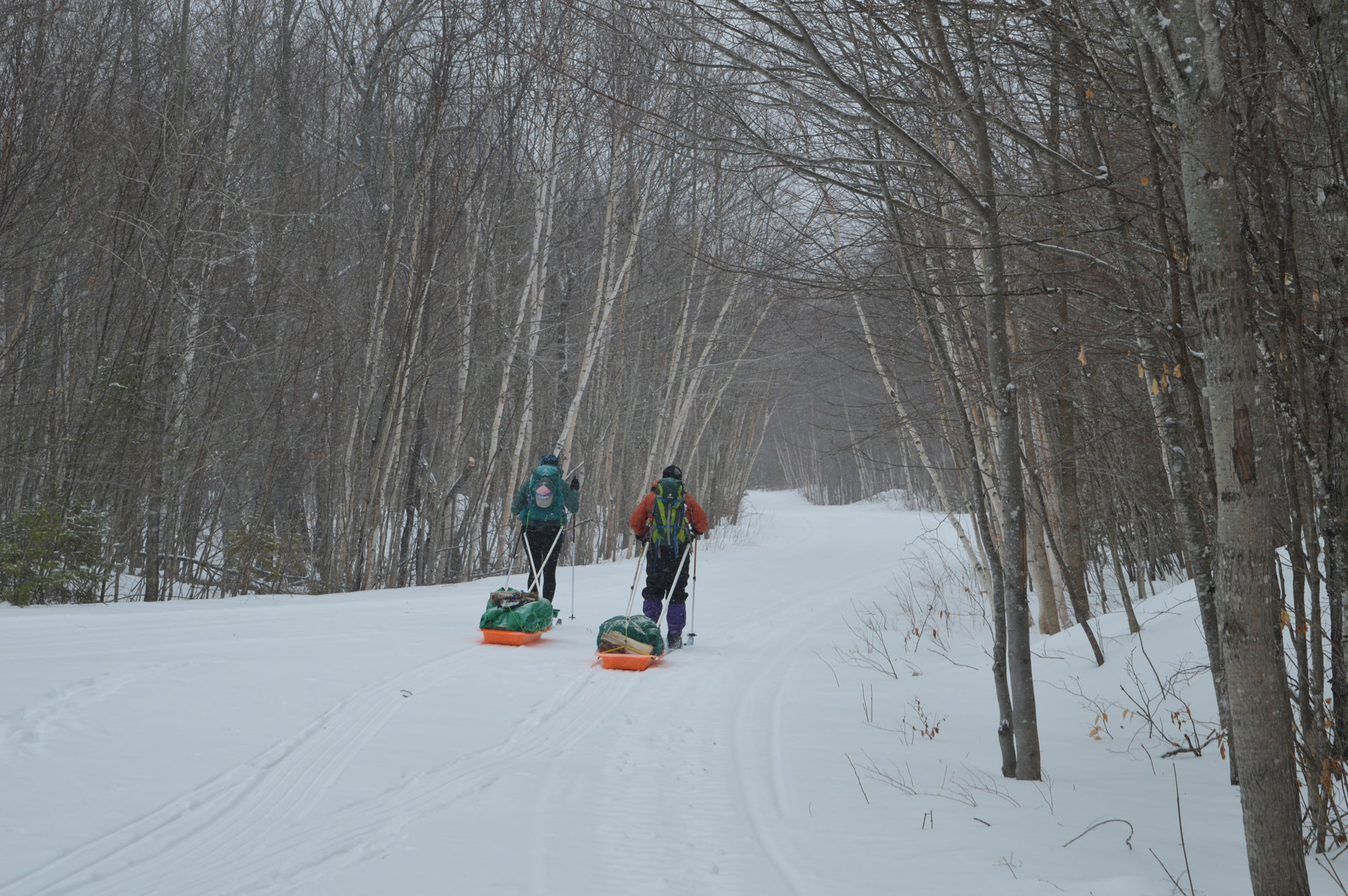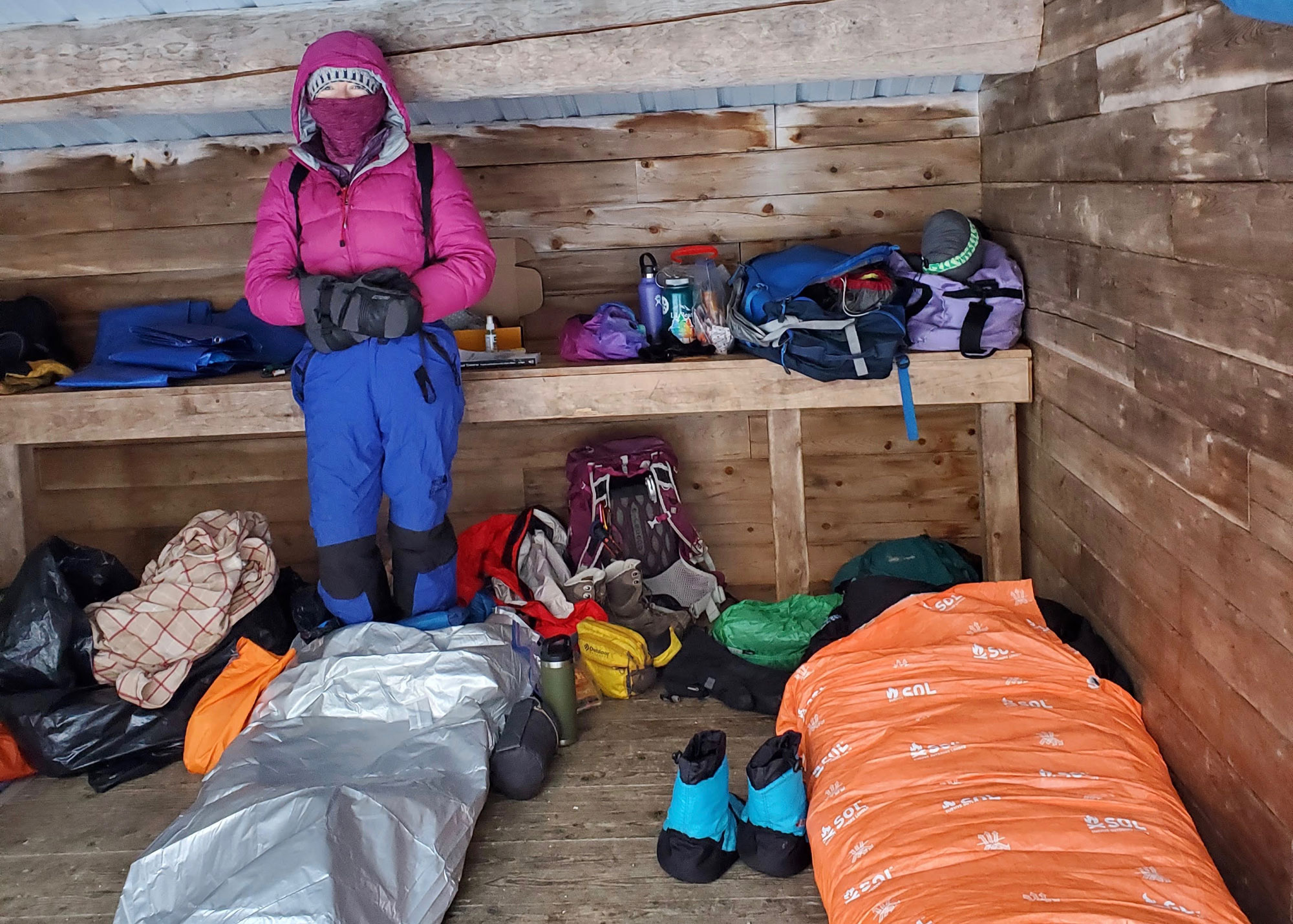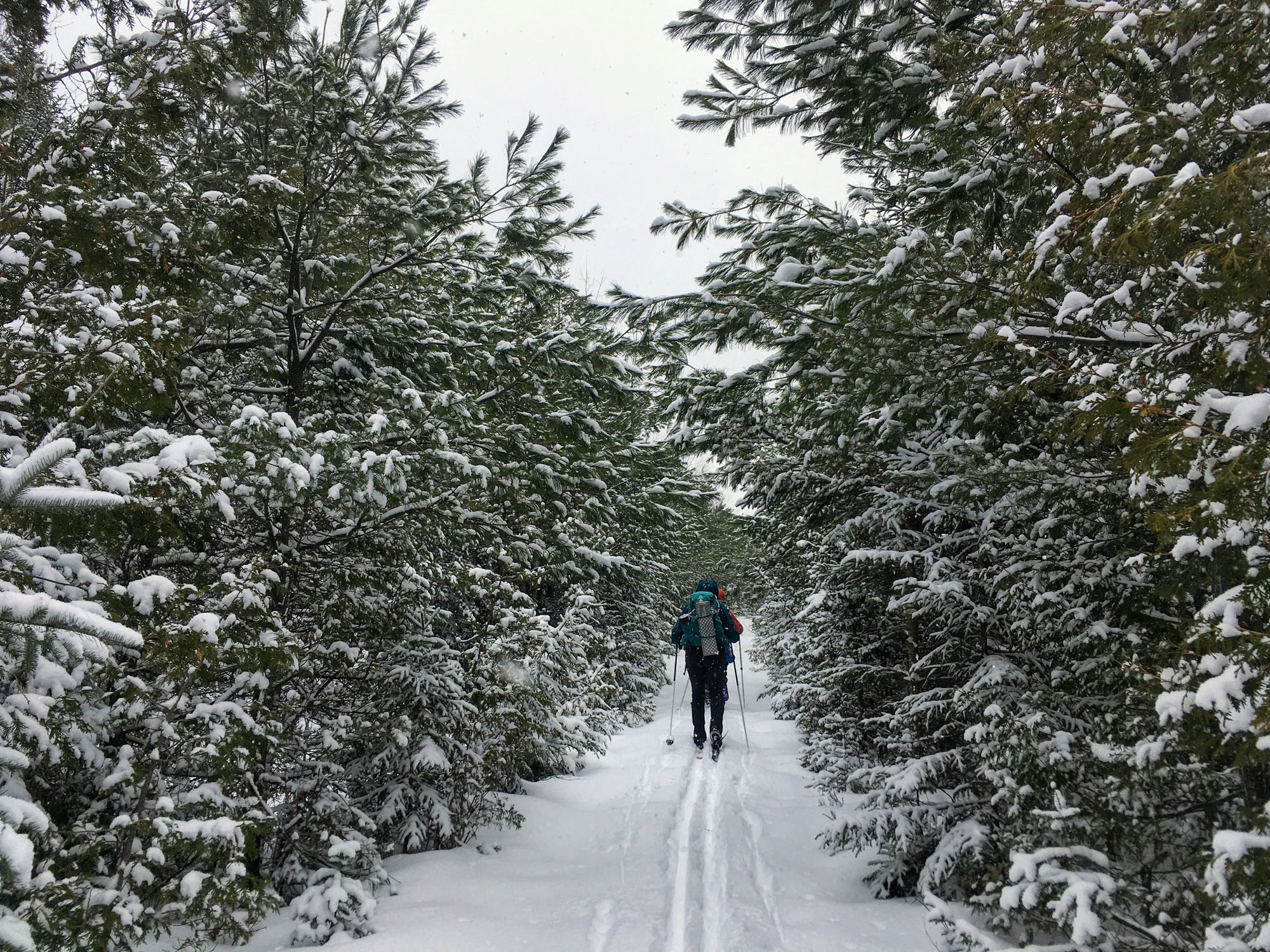Trekking through a beautiful winter landscape with the promise of a warm hut at the end of a long, cold day is an experience that keeps hut goers coming back year after year. But this winter, when huddling up around a blazing wood stove with friends and friendly strangers doesn’t conjure the same cozy thoughts as it once did, some adventurers are making the transition to camping. With a few adjustments to gear, planning, and expectations, you can trade your bunk for a sleeping pad under the stars this winter.

1. Rethink your stove and fuel
If you’ve become accustomed to using a full hut kitchen with shiny stainless steel appliances, or you’ve been putting in your breakfast and lunch order with the cook before you tuck yourself into your bunk, winter camping may feel like a long fall from grace. To make matters worse, your beloved backpacking canister stove, which has nourished you on many an outdoor adventure, may need to stay behind. Many of these stoves utilize a combination of isobutane and propane, and these often won’t work when the temperature hovers around freezing, and they stand no chance of working at 10 degrees or less. Instead, you’ll need a camp stove that runs on white gas. If you’ve never used one, you’re in for an altogether different experience—one that might involve a few spontaneous creative combinations of curse words. Read the directions and practice before you go. It gets easier and less terrifying each time.
2. Get organized
Winter camping requires more gear than a hut trip, and that means more gear to organize. You may have a fanny pack filled with items you need easily accessible (map, compass, hand warmers, snacks), a backpack filled with items you need while traveling (layers, more food, thermos, headlamp, and a first aid kit), and a pulk sled with group gear, skis or snowshoes, sleep system, more clothes, stove, food, shovel, and emergency supplies. Make a list (or a drawing) of your bags and the items they contain. Study it. You can’t spend time searching for something when you need it. You may need to know how to locate any one item of gear at any given moment.

3. Dial in your sleep system
Your sleeping pad, bag, and bivy system work together to keep you warm. A sleeping pad with an R-value rating of 6 or more (or multiple pads to reach that rating—they are cumulative, so 3 pads with a 2 R-value will get you to 6), combined with a 0-degree sleeping bag is a good choice for New England winter camping. But the ratings on the pads and bags are usually designed to keep you alive at the established temperatures, not to keep you comfortable. Bring a winter liner, quilt or a wool blanket to provide additional warmth, and test your sleep system out before you go. If possible, pick a clear, cold night and set yourself up in your yard or in a front country campsite where you can hop in your car and drive home if necessary.
Tip: Sleeping bags lose their insulating properties over time (even when stored properly: uncompressed), so if your bag is older, don’t assume it’s as warm as it once was. (Also, you might be older, and might require more warmth than you once did.)
4. Dress like a child
Think A Christmas Story here. Big, bulky snow pants and a parka. The sleek layers that keep you surprisingly comfortable when you’re in motion won’t work once you’re in camp. Bring enough clothes to keep you warm while staying put. These extra clothes can be brought into your sleeping bag for added warmth in the night, too.

5. Bring an ax and a bow saw
In general, trails that lead to huts are maintained throughout the winter and it’s usually fairly easy to get intel on the status of the hut trails. Winter camping is (strangely) not embraced by as many folks and so it’s entirely possible (likely, even) that you could be the first group heading out to your campsite or lean-to. Give yourself plenty of time to maneuver blow downs, and bring tools to help clear the trail in case you encounter something you can’t navigate. The saw will come in handy for building a fire, too (use dead and down wood only).
6. Get ready for things to take longer
If you pride yourself on your ultra-fast break-camp time on your hut trips, winter camping will be different. Unless you chose your trip-mates extremely well, you’re not likely to wake up to coffee brewing. Instead, expect to start your day by slowly inching your way out of your warm bag into the frigid air, wrestling cold boots onto your feet (even though you keep them in your bag, they’ll be stiff), and melting a lot of snow for water.

7. Allow at least one luxury item
Winter camping is tough. Some things make it less tough. A comfortable camp chair is an ingeniously simple and beautiful thing and it might just be your favorite thing after a day of hauling your pulk sled through miles of thick blowdowns. If it’s light and it will help make you comfortable, bring it.
8. Remember your ABCs: Always Be Consuming (Calories)
You need energy to stave off the cold. Bring a variety of your favorite foods so you don’t get bored. Eat regularly, and plan to eat more than you usually do on a cozy hut trip.

9. Keep an eye on the weather
Weather is a factor in every backcountry trip, in all seasons, but its importance is elevated on winter camping trips. Without four walls and a wood stove, you’re vulnerable to dangerously cold temperatures. Make plans, but watch the weather in the days leading up to your trip, including the extended forecast, as fronts can move faster than expected, and be flexible with your dates. Since most intrepid adventurers tend to be detailed planners, flexibility can be one of the toughest components to winter camping, but it’s key to the safety and success of your trip.
10. Leave your itinerary with friends or family
This is a good practice anytime you head into the backcountry, but it’s especially critical in winter. Mistakes, accidents, and the unexpected can happen on any trip, but the margin for error on a winter camping trip is substantially reduced. Make sure people know where to find you and when to expect you back. Don’t deviate from the route you share with others. The goal is always to go out on the next trip.
Camping in the winter is a truly spectacular adventure. If you can gather the proper equipment, enlist a group of like-minded adventurers, and maintain a positive attitude in the face of adversity, you’re in for a real treat. It’s tougher than a hut trip, but with great effort, comes great reward.
Sarah Hunter
Sarah is the communications director for Pine Island Camp, a trip leader for the Appalachian Mountain Club, and a freelance writer. She lives in Maine with her husband and their two sons, and together have trekked and pedaled thousands of miles – from day hikes and backpacking trips in the high peaks of New England to week-long, self-supported bike tours in the US and Canada.
Related Posts
April 2, 2024
10 Tips for Mountain Biking Etiquette During Mud Season
One rough spring could ruin the…




